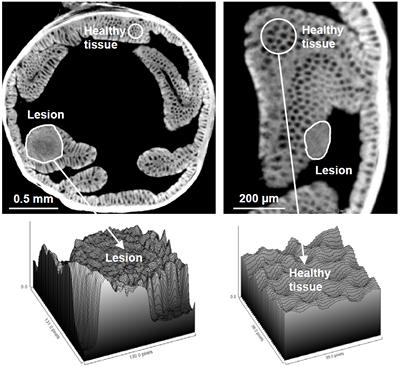Research project: A novel way to enhance the diagnosis of early stage of colorectal cancer through micro-computed tomography imaging
Colorectal cancer (CRC) is currently the second most common cause of cancer-related death in Europe. Early diagnosis of CRC is essential as it leads to better therapy and survival rates. However, advanced cancers are still being reported, although patients are screened by regular surveillance colonoscopies and biopsies. In recent years, advanced technologies such as gene microarrays have attempted to find susceptible genes to link the inammation and CRC for diagnostic and prediction purposes, but this has not been very successful. Patients with long-term inammatory bowel disease (IBD) in particular, have a 20% lifetime risk of developing CRC. To this end, a novel way is proposed, to enhance the timely diagnosis of early-stage CRC in patients with IBD or familial heritage through micro-computed tomography.
